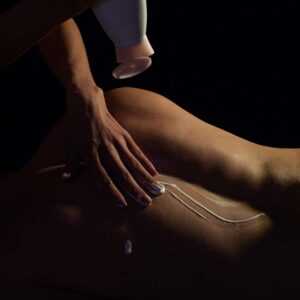Top 5 Massage Styles for Ultimate Relaxation
Life’s daily stressors can take a toll on your body and mind, making relaxation not just a luxury but a necessity. Today, people engage in different activities to relax, including yoga, exercise, sports, walking, or even fun online casino games. You can read more here about exciting online games to play for real money. While all these activities help in their own way, few things can match the therapeutic benefits of a well-executed massage.
When done right, massages have an amazing way of easing body tension and melting away all your stress. They don’t just work on your muscles; they also have a positive impact on your nervous system. Studies have shown that a good massage can help loosen tight muscles, improve blood and lymphatic circulation, lower stress hormones, and boost flexibility.
There are, however, different massage styles tailored for different purposes. While some are perfect for relaxation, others are great for relieving chronic pain, and some are designed to boost performance. This article focuses on the best massage styles for relaxation. We will discuss the techniques used in these massages and how exactly they help ease physical and mental stress. Let’s dive right in!
Swedish Holistic Massage
The Swedish holistic massage is a full-body massage administered with soothing and rhythmic full-body strokes. Specifically, there are five basic techniques used during a Swedish massage. They include:
- Effleurage: The massage therapist applies oil over an area of the body and then uses their palm with a little bit of pressure to slide repeatedly in the direction of the heart. It is believed to help calm nerves and improve blood circulation.
- Petrissage: The therapist lifts the flesh rolls and squeezes it in a way similar to kneading a dough. This helps relax the muscles and releases tension.
- Friction: This technique is used to work on the deeper body tissues. The therapist rests his body weight on his palm, which he then slides in alternating circles across an area of the body.
- Tapotement: As the name implies, this technique involves a series of hand taps or pats done rhythmically. The tapping is said to stimulate the body’s muscles.
- Vibration: With this technique, the massage therapist makes a rhythmic vibrational movement with their palms or fingers on the massage area. This technique is said to be mostly beneficial for relaxing nerves in the body area where there are large scars or knots.
As indicated, each technique has different effects on the body, all contributing towards ultimate relaxation. The Swedish massage style can also be used to manage chronic pains, and it has also been associated with boosting immunity.
Hot Stone Massage
The hot stone massage is another ideal massage style if you’re seeking relaxation and relief. It is usually incorporated into other massage styles, like the Swedish massage, but it can also be carried out independently.
The hot stone massage involves the usage of hot, smooth stones, typically basalt or volcanic rock, because they retain heat so well due to their high iron content. These stones are warmed in water, with the temperature carefully maintained between 110°F and 130°F. This ensures they’re comfortably warm, hot enough to relax your muscles but not so hot that they cause burns. There are also professional massage stone heaters, which are preferably the best option.
In a hot stone massage, the therapist typically places the hot stones on the area or muscles being worked on. The stones are then kneaded gently on the body in rhythmic circular motions, vibrations, or long strokes. The stones provide heating therapy, which can help relax muscles and reduce tension and pain.
Reflexology
Reflexology is a massage style that only involves hands and feet. There are approximately over 10,000 nerve endings in the feet and hands, and each leads to corresponding parts of the body. The technique works by stimulating these nerve endings to relieve tension in the part of the body that they are connected to.
Reflexology helps reduce stress, relieve tiredness, and ultimately relax the body. It has also been shown to help improve nerve function, boost metabolism, and increase blood flow. It is sometimes incorporated as part of other massage styles, but it can also be done independently.
Aromatherapy
With this massage style, the therapist uses essential oils extracted from plants with unique scents and therapeutic properties. The oils are applied directly to your skin and massaged gently onto it. The idea is that the oils will be absorbed into the body, and the aroma will stimulate your olfactory senses to evoke an emotional and relaxing experience.
Aromatherapy massage helps reduce stress, alleviate muscle tension, and relax the body. Alongside the feeling of relaxation, this massage style is also said to improve skin condition, reduce insomnia, alleviate migraines and headaches, and generally improve health and well-being.
Deep Tissue Massage
Deep tissue massage is quite popular. It is similar to Swedish massage but takes things a step further. The key difference is the pressure; the pressure applied in deep tissue massage is much more intense than in a Swedish massage.
Deep tissue massage is typically used to target deeper layers of muscle and to address chronic tension or knots. The therapist employs slow, deliberate, and sustained pressure on the particular body area that is being focused on. This helps release built-up tension, improve blood flow, and promote healing in that part of the body.
Conclusion
The physical and mental benefits of a good massage are almost unlimited. One undeniable advantage, however, is its ability to serve as the ultimate relaxation therapy. So, take a moment out, treat yourself to a soothing body massage, and give your body and mind the relaxation they truly deserve. Not only will you leave feeling refreshed and rejuvenated, but you’ll also enhance your overall well-being.

